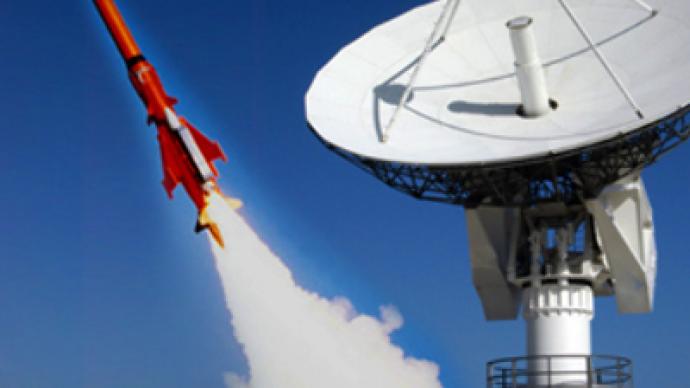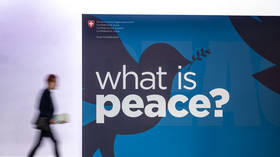Is the US administration capable of accomplishing its objective?

Early this year, as the formation of the new US administration was fully under way, the Obama-befriended Center for American Progress published a book of guidelines for the new American leader.
Guidelines for the president (AKA the president’s crib sheet)
Out of an array of recommendations on various subjects and organizational issues one was striking as truly fundamental: the president’s authority will directly depend on his ability to convince those around him of his leadership. This can be achieved by securing a success in a small number of high-priority issues which should be both serious enough to generate public credit and simple enough to generate no further complications. If this is not achieved, the administration will lose its political weight and the ability to control Congress, as well as the numerous opposition groupings among the political elite circles. Fast progress in addressing the top-priority issues predefined by the administration itself is vitally important for the country’s new leadership.
The new strategic arms treaty has become a priority both in the domain of American external policy, to some extent, and in the sphere of Russian-American relations. Soon after US Vice President Joe Biden’s speech at the Munich conference in December 2008 and the introduction of the “reset” concept, the progress in achieving this goal was nailed down as a crucial indicator. The overall process was re-focused on relations around the strategic arms issue. Today, we are nearing the moment when the US administration should be given credit for being or not being able to achieve the set target, so naturally it is interested in a positive scenario.
Clinton: a timely visit
Hillary Clinton’s October visit to Moscow is very timely indeed. On October 3, the sixth round of expert negotiations was completed. It was devoted to working out details of provisions and wordings of the new treaty. The next round is due to start shortly. Naturally, this kind of work requires support on a political level, all the more so that, unlike the two countries’ presidents who had a fruitful meeting at the end of September, Russian Foreign Minister and the US Secretary of State have not had a one-on-one meeting since last July.
As the deadline of December 5 (the expiry date of the current START agreement) nears, all other aspects of Russian-American relations are overshadowed. In the meantime, it is not quite clear even today how the new treaty is going to reconcile such fundamental controversies as the deployment of non-strategic arms on strategic carriers and re-mountable warheads. Nor has the optimal balance between offensive and defensive armaments been completely defined either. Russia has repeatedly stressed that it hopes to obtain additional clarifications from Washington in regard to their new missile defense system approach.
Negotiations: behind the curtains
Given all the above, both Hillary Clinton’s visit to Moscow and her speech at Moscow State University shed light on one of the key aspects of the negotiation process. The essential feature of the START-1 agreement that makes it distinct from any other agreement in this area, whether past or future, is the thoroughly detailed system of control and checks ensuring that the treaty’s provisions are complied with. Due to this, the expiry of START-1 is especially painful, even though the Strategic Offensive Reductions treaty remains valid. As Russian-American relations have largely been volatile over the last couple of decades, such a detailed control system is a tool necessary to enhance the mutual trust or, when the trust is failing, to build it or even serve as its substitute.
At the same time, both parties have repeatedly claimed that they do not intend to keep the treaty as it is (this would merely require the extension of its validity by another five years as is stipulated in the document). Russia has often referred to high costs of the currently valid system of checks (START-1 involves 12 types of inspections), and the United States are in agreement with Russia on this, although they do take advantage of the opportunity to conduct thorough checks on Russian warfare potential.
Diplomatic rhetoric, or a step forward?
The speech Hillary Clinton delivered at Moscow State University seems to show aspiration to find the most acceptable decision. It says that both countries should open access to a command and control center – which is essentially different from the whole idea of strategic offensive arms; it puts the emphasis on the inspection of the strategic nuclear facilities in order to have a possibility for their visual examination.
“We are open to transparency and to cooperation when it comes to missile defense,” Clinton explained. “When it comes to arms reduction treaties or missile defense – we have invited your top military experts and scientists to come to our command and control centers to ask every question that they have, and we would like to do the same because we want there to be a common understanding.”
However it’s now the duty of the military officials to assess the effectiveness of such visits and compare them to the traditional forms of control. What is more important, in my opinion, is the ideological shift. Access to command and control centers, especially provided on a regular basis, can essentially improve the level of mutual understanding. Washington tries to put their idea of cooperation and partnership into words of definite proposals. The next step is to steer this partnership onto the level of cooperation in the outer world, such as cooperating on resolving global problems like preventing irresponsible players from obtaining weapons of mass destruction. In other words, it’s a claim for further actions after the December 5. That’s where the difference lies between the modern “reset” and the period of the Cold War, when the aim was to fix the balance and establish bilateral cooperation.
In the background of the recent opinions by Russian experts on the gradual termination of “reset” and a return to “business as usual”, such words seem optimistic. Beside the cautious realism, which explains many slips in speech, there is also the element of a romantic liberal vision which has not been seen in American foreign policy towards Russia for quite a time. Despite the difficult reestablishment of relations between our countries, this element continues to be stable.
Back to the future
At the same time we can see the enclave nature of the new turn of US politics towards Russia. The current course of politics is paradoxically parallel to the one of George Bush of up to August 2008, when a tough and aggressive rhetoric was accompanied by very limited practical activity. At present, the encouraging rhetoric about partnership and cooperation is accompanied by a very narrow area of practical actions.
Moreover, even in the most pathetic speeches, the US mainly sees the new elements of cooperation though the prism of their own interests. It shows first of all the tendency to determine the agenda of cooperation – choosing the most convenient for Washington topics. Thanks to that, Russia has no reason to believe in the naïve utopia of the beginning of the 1990s, given that no signs of it can be seen so far.
What’s more visible is the skeptical attitude to the “reset” due to its limited and selective nature. But, in fact, these are its best qualities. Any attempts to make it universal, like trying to apply it in cooperation in the post-Soviet space, would be fatal. This would only return us to the rhetoric of confrontation. And the phantom of the Cold War would soar around. In her speech at Moscow State University, Hillary Clinton showed an aspiration to concentrate on a more limited, but bearing more perspectives agenda. She proposed to move on by a step-by-step and selective basis, with bright declarations which are so pleasant to the partner’s ear. Russia should take advantage from that positive turn of relations to get maximum profit. Besides, as we know from the history of bilateral relations, such positive trends are rarely long-lasting.
By Igor Istomin from the Department for Applied Analysis of International Issues of the Moscow State University of Foreign Affairs (MGIMO) for RT












